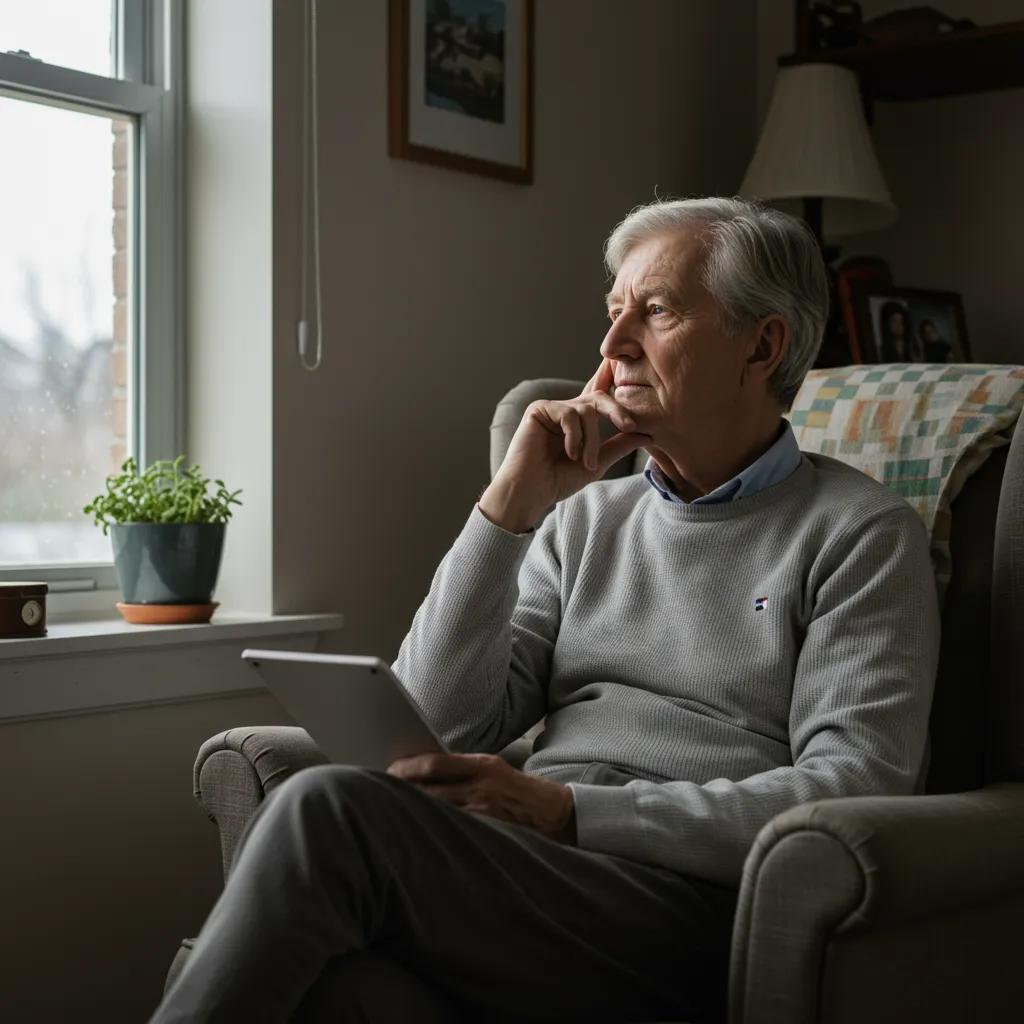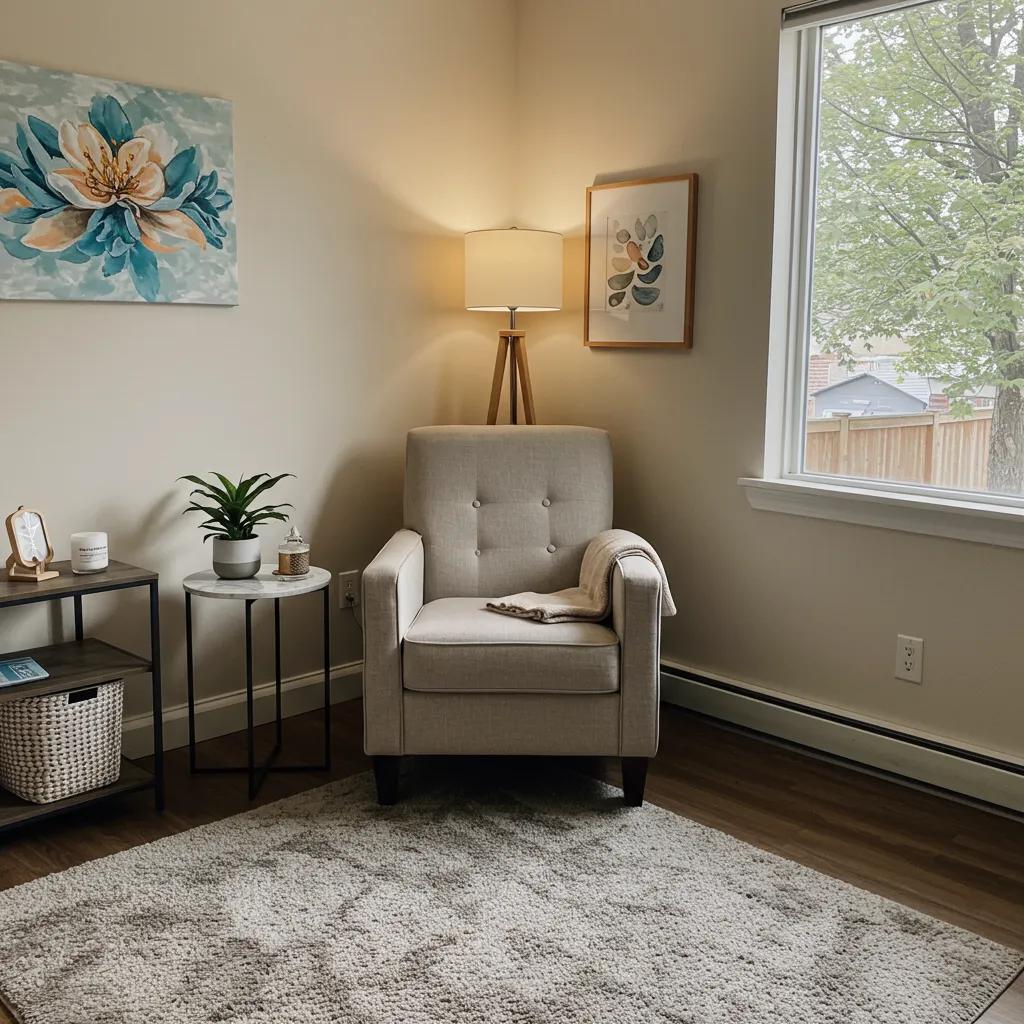Does OCD Get Worse With Age? Understanding OCD Progression and Management Over Time
Obsessive–Compulsive Disorder (OCD) is a chronic mental health condition characterized by intrusive obsessions and repetitive compulsions that cause distress and interfere with daily functioning. Age alone does not automatically make OCD worse, but a combination of untreated symptoms, accumulating life stressors, medical comorbidities, and neurobiological changes can lead to symptom escalation in some people as they get older.
This article explains how OCD can progress across the lifespan, highlights how symptoms commonly present in older adults, and lays out evidence–based, age–tailored treatment approaches such as Exposure and Response Prevention (ERP) and Cognitive Behavioral Therapy (CBT). Readers will also find practical guidance for families and caregivers, a focused review of life transitions that commonly worsen OCD, and clear indicators for when to seek higher levels of care. Finally, we describe how residential, structured programs can adapt therapies for older adults and when an intensive option may be beneficial.
How Does OCD Progress Over Time and With Aging?
OCD progression over time is best understood as a dynamic interplay between baseline disorder severity, treatment history, psychosocial stressors, and brain health rather than a simple age–dependent decline. Untreated or intermittently treated OCD often follows a fluctuating course with periods of relative remission and episodic exacerbation; conversely, consistent evidence–based treatment generally reduces severity and improves function. Biological factors such as small changes in fronto–striatal circuitry and cognitive slowing can alter how symptoms present, while social factors like loss of routine and isolation can precipitate relapse. Understanding these interacting elements clarifies why some older adults report worsening symptoms and why others maintain stable or improved functioning with appropriate care.
What Factors Influence OCD Severity as People Age?
Several individual, environmental, and biological factors accumulate with age and influence OCD severity. Untreated compulsions become reinforced over years, increasing the time and cognitive resources devoted to rituals and raising the risk of functional impairment. Life stressors such as bereavement, retirement, and new medical diagnoses can trigger or intensify obsessions by increasing general anxiety and reducing coping reserves. Finally, co–occurring conditions like depression, cognitive impairment, and chronic pain interact with OCD symptoms to complicate presentation and response to treatment.
To summarize these influences clearly, the table below maps common risk factors to how they affect OCD and supporting notes.
| Factors | How It Affects OCD | Notes |
|---|---|---|
| Untreated compulsions | Reinforces rituals and narrows behavior | Longstanding avoidance increases disability and treatment resistance |
| Major life stressors | Trigger symptom spikes and new obsessions | Events such as loss or retirement reduce routine and increase rumination |
| Comorbid mental/physical illness | Amplifies distress and impairs response to therapy | Depression and chronic pain commonly co–occur with worse outcomes |
This table highlights that risk factors interact, so clinicians assess cumulative burden when planning interventions and monitoring progression.
Can OCD Symptoms Intensify Without Treatment?
Yes—when compulsive behaviors go unaddressed, they become reinforced through negative reinforcement, making obsessions more intrusive and rituals more frequent and time–consuming. Over years, avoidance reduces exposure to corrective experiences, locking the person into cycles of increasing restriction and impairment that affect work, relationships, and self–care. Epidemiological data and clinical follow–up studies show higher rates of functional decline and comorbid depression among individuals with untreated or undertreated OCD. Early and consistent use of ERP and CBT interrupts reinforcement, prevents escalation, and improves long–term prognosis, underscoring the importance of timely intervention.
How Do Brain Changes Affect OCD in Older Adults?
Age–related neurobiological changes can modify how OCD manifests and how individuals respond to treatment, but these changes are nuanced rather than deterministic. The orbitofrontal cortex and anterior cingulate cortex—regions implicated in OCD—show altered connectivity in some older adults, and age–related neurotransmitter shifts can affect anxiety regulation and cognitive flexibility. Cognitive slowing or mild executive dysfunction can make therapy homework more challenging and necessitate pacing or caregiver involvement during treatment. However, current research through 2025 emphasizes variability: some older adults maintain intact executive function and respond well to standard ERP, while others require tailored approaches that account for cognitive and medical profiles.
What Are the Common OCD Symptoms in Older Adults?

Core obsessions and compulsions in older adults mirror those in younger people—contamination fears, harm obsessions, checking, ordering, and mental rituals—but presentation often shifts due to physical limitations and life context. Older adults may reduce or modify physically demanding compulsions and instead rely more on mental rituals, reassurance seeking, or repeated calling of family members. Medical comorbidities, medication schedules, and daily routine changes can camouflage or exacerbate symptoms, making caregiver reports and functional assessment critical for accurate diagnosis. Clinicians should watch for late–emerging symptoms or patterns that differ from a patient’s lifelong behaviors.
How Do Obsessions and Compulsions Manifest Differently With Age?
Practical changes in presentation include a shift from active, physical rituals to covert mental rituals and increased reassurance–seeking as mobility decreases. For example, an older adult who previously performed frequent cleaning may now experience persistent intrusive contamination thoughts expressed through repeated checking or mental counting, which are less visible to caregivers. Routine disruptions—such as retirement—can remove structured activities that previously distracted from obsessive thinking, making symptoms more apparent. Caregivers and clinicians should therefore probe for internal compulsions and subtle functional decline when assessing older individuals.
To illustrate typical symptom changes, the table below maps common symptoms to how they often appear in seniors and their clinical implications.
| Symptom | Typical Senior Presentation | Clinical Implication |
|---|---|---|
| Contamination fears | More avoidance of social settings; mental reassurance | Risk of isolation and secondary depression |
| Checking behaviors | Repeated medication or appliance checks; caregiver involvement | Safety monitoring needed; may be misattributed to forgetfulness |
| Mental rituals | Counting, silent prayers, or rumination | Harder to detect; requires targeted clinical questioning |
What Are Signs of Late–Onset OCD?
Late–onset OCD refers to symptoms that begin in mid–life or later rather than childhood or early adulthood, and clinicians often define it with onset thresholds around the 40s–60s in research. Triggers for late onset commonly include neurological events (e.g., stroke, head injury), acute medical illnesses, or psychosocial stressors such as bereavement. Evaluation should include a careful medical and neurological workup to rule out secondary causes, cognitive screening to assess executive function, and a medication review since polypharmacy can contribute to new obsessive or compulsive symptoms. Differential diagnosis is essential because late–onset presentations sometimes reflect underlying medical or neurodegenerative processes rather than primary OCD.
Research indicates that late-onset OCD, defined as symptoms appearing after age 35, is a distinct phenomenon with unique characteristics compared to childhood-onset OCD.
Furthermore, studies comparing different age groups of OCD onset reveal specific demographic and clinical differences.
What Life Stressors and Transitions Can Worsen OCD With Age?
Major life transitions and stressors commonly associated with aging increase vulnerability to OCD symptom spikes by elevating anxiety, disrupting routines, and reducing external supports. Events such as retirement, loss of a spouse, serious health diagnoses, or becoming a caregiver can each precipitate heightened obsessions or renewed compulsive attempts at control. Social isolation and reduced daily structure remove protective activities that previously limited rumination. Identifying and proactively managing these stressors through psychosocial supports and stress–targeted interventions can reduce the likelihood of sustained deterioration.
Which Major Life Events Trigger OCD Symptom Flare–Ups?
Several specific events repeatedly appear as triggers for symptom exacerbation among older adults. Retirement often removes external structure and daily distraction, giving intrusive thoughts more cognitive space; bereavement increases grief–related anxiety that can generalize into contamination or harm obsessions; new medical diagnoses elevate health–related obsessions.
Major life events that commonly trigger OCD worsening include:
- Retirement leading to loss of routine and increased rumination.
- Bereavement producing heightened anxiety and intrusive thoughts.
- New serious medical diagnoses that amplify health–related obsessions.
Anticipatory planning and early psychosocial support around these events can prevent prolonged symptom escalation and maintain functional independence.
How Does Social Isolation Affect OCD in Older Adults?
Social isolation increases rumination and removes natural accountability that discourages ritual enactment, thereby amplifying obsessive thoughts and normalizing compulsive avoidance. Reduced contact with friends and community limits informal reality testing that can challenge irrational beliefs tied to obsessions, increasing the likelihood that rituals will remain unchecked. For caregivers and providers, interventions that restore social connection—through community programs, telehealth, or structured group therapy—can reduce isolation’s impact and improve treatment adherence. Addressing isolation also helps mitigate secondary depression, which commonly co–occurs and can worsen OCD outcomes.
What Role Does Stress Play in OCD Progression Over Time?
Stress acts through both behavioral and biological pathways to worsen OCD: acutely it increases anxiety that triggers compulsive responses, and chronically it erodes coping reserves and executive control needed to resist rituals. Biologically, sustained stress hormones influence neural circuits involved in threat detection and habit formation, which can entrench repetitive behaviors over time. Stress–focused interventions—such as mindfulness, relaxation training, and paced ERP work—reduce reactivity and improve tolerance of anxiety during exposures. Therefore, integrating stress management into long–term OCD care is critical for preventing relapse and preserving gains from therapy.
How Is OCD Treatment Tailored for Older Adults?

Evidence–based treatments for OCD—primarily Exposure and Response Prevention (ERP) and Cognitive Behavioral Therapy (CBT)—remain effective across the lifespan, but clinicians adapt delivery for older adults by adjusting pacing, incorporating caregiver support, and coordinating with medical teams. Medication management emphasizes careful dosing, interaction checks, and collaboration with primary care because polypharmacy and age–related pharmacokinetic changes influence tolerability. Complementary approaches such as Acceptance and Commitment Therapy (ACT) and Dialectical Behavior Therapy (DBT) techniques assist with emotional regulation and adherence, while lifestyle supports (sleep, exercise) enhance overall resilience. Tailoring treatment also means offering in–home or residential options for those with mobility or access barriers to outpatient care.
What Evidence–Based Therapies Are Effective for Aging Individuals?
ERP and CBT are first–line therapies for OCD and retain strong evidence for symptom reduction in older adults when adapted for cognitive pace and sensory needs. Therapists working with seniors often extend session length or increase repetition, break exposures into smaller, manageable steps, and enlist family members to support practice outside sessions. ACT and DBT skills complement ERP by improving distress tolerance and emotion regulation, which helps patients maintain exposure practice and reduce avoidance. Recent clinical guidance emphasizes flexible delivery modes, including home–based work and telehealth, to improve access and maintain consistent treatment.
| Therapy | Age–Related Consideration | Implementation for Older Adults |
|---|---|---|
| ERP/CBT | Cognitive pacing and repetition needed | Shorter, more frequent exposures; caregiver–assisted practice |
| Medication (SSRIs) | Dosing and interaction sensitivity | Start low, go slow; coordinate with primary care for polypharmacy |
| ACT/DBT | Focus on distress tolerance and acceptance | Integrate brief skills modules and group practice |
After outlining clinical adaptations, it is important to note how structured residential programs can further tailor care for older adults. Residential settings provide a controlled environment for intensive ERP practice, continuous monitoring for medical interactions, and scheduled routines that reduce isolation and reinforce therapeutic gains. For older adults with complex comorbidities or those who face substantial barriers to outpatient treatment, a residential therapeutic environment can combine clinical focus with practical assistance to accelerate stabilization and teach durable coping skills.
How Does Medication Management Differ for Older Adults With OCD?
Pharmacotherapy for OCD commonly uses selective serotonin reuptake inhibitors (SSRIs), but in older adults clinicians must weigh dosing, side effects, and drug–drug interactions more carefully. Age–related changes in metabolism can increase sensitivity to side effects such as hyponatremia, gastrointestinal upset, or falls associated with sedation, so starting at lower doses with gradual titration reduces risk. Collaborative management with primary care or geriatric psychiatry is recommended to reconcile medications, monitor laboratory markers, and assess cardiovascular or cognitive risks. Regular review of medications and clear documentation help prevent interactions that could mimic or worsen obsessive symptoms.
What Holistic and Supportive Approaches Aid OCD Management in Seniors?
Adjunctive strategies—mindfulness, graded physical activity, sleep hygiene, and caregiver education—support core therapies by reducing baseline stress and improving cognitive resilience. Mindfulness and relaxation training lower anxious arousal that fuels compulsions, while moderate exercise enhances mood and executive function, making ERP practice easier to tolerate. Structured caregiver training teaches supportive behaviors that avoid enabling rituals while assisting with logistics like appointment attendance and medication adherence. Integrating these holistic elements creates a comprehensive plan that addresses both symptom mechanics and daily living factors crucial for sustained recovery.
What Unique Challenges Do Older Adults Face When Living With OCD?
Older adults with OCD often confront intersecting barriers that complicate diagnosis and treatment: physical comorbidities that restrict activities, transportation and mobility limitations that impede clinic attendance, and stigma or generational beliefs that discourage help–seeking. Sensory impairments or cognitive decline may mask compulsions or be mistaken for forgetfulness, delaying appropriate treatment. To overcome these issues, providers should offer flexible care pathways—telehealth, home visits, and residential options—and provide clear education for families about how to support without enabling rituals. Addressing these practical challenges is essential to improving access and outcomes.
How Does Physical Health Impact OCD Treatment and Symptoms?
Chronic medical conditions—pain syndromes, cardiovascular disease, neurologic disorders—interact with OCD by increasing general distress and limiting the feasibility of some exposures. For example, mobility restrictions change the nature of behavioral experiments and may require creative, safety–focused exposure hierarchies. Medical side effects can mimic psychiatric symptoms, so careful interdisciplinary coordination between mental health clinicians and medical providers ensures safer medication choices and unified care plans. When physical health complicates treatment, multidisciplinary teams help tailor interventions and prioritize functional goals.
Why Is Access to Care More Difficult for Seniors With OCD?
Practical barriers such as limited transportation, reduced mobility, and fewer geriatric mental health specialists restrict access to evidence–based OCD care for many older adults. Stigma and a tendency to normalize distress as “part of aging” also reduce help–seeking, delaying diagnosis and treatment. Solutions include telehealth services that bring therapy into the home, mobile clinical teams, structured outpatient programs with transportation support, and residential programs for those needing concentrated care. Increasing system flexibility and clinician training in geriatric mental health improves access and reduces the burden on patients and families.
How Can Families Support Aging Loved Ones With OCD?
Families play a crucial role by balancing compassion with strategies that avoid reinforcing compulsions, facilitating treatment access, and monitoring safety and medication adherence. Practical do’s include helping with appointments, encouraging ERP practice without participating in rituals, and communicating observations to clinicians; don’ts include providing reassurance that maintains compulsive checking or accommodating avoidance behaviors. Caregivers should also attend psychoeducation sessions and prioritize their own self–care to avoid burnout. Early family involvement increases treatment adherence and reduces isolation, improving long–term outcomes.
How Does Revival Mental Health Support OCD Treatment Across the Lifespan?
Revival Mental Health provides residential mental health treatment designed for intensive, personalized therapy and continuous professional support—characteristics that align with the needs of older adults who require structured environments for recovery. The facility integrates evidence–based therapies such as CBT, DBT, ACT, and ERP within a residential therapeutic setting, enabling frequent therapy sessions, practiced exposures, and multidisciplinary coordination. Revival Mental Health emphasizes a personalized care model that adjusts pacing and support according to age and medical needs, and its 24/7 professional staffing offers immediate monitoring for crises, medication tolerance, and comorbidity management. For older adults facing access barriers or needing concentrated intervention, this structured approach supports stabilization and skill rehearsal in a safe environment.
What Personalized Care Does Revival Mental Health Offer for OCD?
Revival Mental Health focuses on individualized treatment plans within a structured therapeutic environment, tailoring interventions to each person’s clinical profile, functional goals, and comorbid medical needs. Individual and group therapies are combined with close clinician collaboration to adjust session pacing and exposure complexity for older adults, while staff provide daily support to reinforce practice and monitor progress. The residential model enables more intensive ERP work with immediate feedback and adapts behavioral plans when mobility or cognitive issues require modifications. This level of personalization helps address complex cases that are difficult to treat in standard outpatient settings.
How Does 24/7 Support Improve OCD Outcomes for Older Adults?
Continuous professional staffing reduces risk by providing immediate crisis intervention, monitoring for medication side effects, and ensuring adherence to exposure practice, all of which foster safer and more effective treatment progress. A structured 24/7 environment decreases social isolation and builds routine, both of which reduce triggers for obsessive thinking and provide consistent reinforcement for adaptive behaviors. For older adults with comorbid medical issues, round–the–clock support enables closer coordination with medical providers and quicker responses to changes in physical health that could affect psychiatric care. Constant support therefore enhances both safety and the likelihood of sustained therapeutic gains.
What Evidence–Based Therapies Are Provided at Revival Mental Health?
The program at Revival Mental Health explicitly includes CBT and ERP as primary evidence–based treatments for OCD, with DBT and ACT offered as complementary therapies to strengthen emotion regulation and acceptance skills. Delivering these therapies in a residential setting allows for concentrated practice, frequent clinician feedback, and integration with medical oversight when necessary. The combination of primary OCD therapies and adjunctive approaches enables a comprehensive plan tailored to older adults, balancing symptom reduction with functional restoration and long–term relapse prevention.
Can OCD Symptoms Improve With Age and Treatment?
Yes—consistent, evidence–based treatment frequently reduces OCD severity and improves quality of life across age groups, including older adults; improvement depends on treatment intensity, adherence, and management of comorbidities. ERP and CBT show durable symptom reductions when practiced consistently, and medication can augment therapy when indicated, especially under careful medical oversight. Long–term strategies such as booster sessions, stress management, social engagement, and caregiver support preserve gains and reduce relapse risk. Individuals and families should pursue assessment promptly when symptoms increase, because early intervention increases the chance of sustained improvement.
What Are Effective Coping Strategies for Managing OCD Over Time?
Sustained symptom management combines regular ERP practice, cognitive restructuring, stress–reduction techniques, and structured daily routines that limit rumination and encourage valued activities. Practical steps include building a graded exposure hierarchy with measurable goals, scheduling brief daily therapeutic practices, using mindfulness to tolerate intrusive thoughts, and engaging trusted family members for logistical support without enabling rituals. Consistent monitoring of sleep, exercise, and medication adherence further stabilizes mood and cognitive function, enhancing the effectiveness of therapy. Implementing these strategies as a lifestyle package reduces relapse probability and supports long–term well–being.
- Key coping strategies to maintain gains include: Regular, scheduled ERP practice supported by a therapist or caregiver. Mindfulness and relaxation exercises to reduce baseline anxiety. Structured daily routines and social engagement to limit rumination.
How Does Consistent Treatment Influence Long–Term OCD Outcomes?
Longitudinal studies and clinical follow–ups indicate that sustained engagement with ERP and CBT produces meaningful reductions in symptom severity and improves functional outcomes, while intermittent care or abandonment of skills increases relapse risk. Booster sessions, relapse prevention planning, and periodic medication review maintain benefits and address life changes that could trigger recurrence. Monitoring coexisting depression, anxiety, or cognitive decline allows clinicians to adjust plans and prevent secondary complications that undermine progress. Thus, consistent, adaptive treatment across the lifespan is the most reliable path to improved outcomes.
When Should Someone Seek Help for OCD Symptoms That Change With Age?
Seek assessment promptly if obsessive or compulsive symptoms begin to interfere with daily functioning, personal safety, medication routines, or social relationships, or if there is new severe depression, suicidal thinking, or marked cognitive decline. Red flags include escalating time spent on rituals, withdrawal from social activities, inability to manage medications, or new onset of compulsions in later life that could reflect medical or neurological issues.
When outpatient treatments fail to produce sufficient improvement or when safety and comorbidity concerns arise, consider higher levels of care such as intensive outpatient, partial hospitalization, or residential programs that offer integrated medical and psychiatric support. For options that provide structured, age–tailored residential treatment and continuous professional monitoring, contact Revival Mental Health by phone at (949) 373–3138 to discuss whether an intensive care pathway is appropriate.





